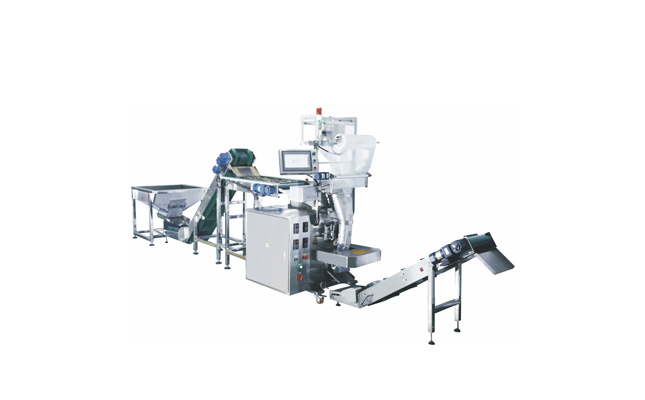
Date | 2023-05-14 08:03:39
Introduction:
In the realm of industrial manufacturing, package machinery plays a crucial role in the efficient and accurate packaging of various products. To enhance productivity and meet the ever-evolving demands of the market, manufacturers are continually exploring and implementing advanced machining techniques. This article delves into some of the cutting-edge technologies that are revolutionizing the package machinery industry.
Computer Numerical Control (CNC) Machining:
CNC machining has transformed the landscape of package machinery production. By utilizing computer-controlled tools and precision programming, CNC machines offer unparalleled accuracy and repeatability. They enable manufacturers to fabricate intricate components with minimal human intervention, leading to improved efficiency and reduced errors.
Additive Manufacturing:
Additive manufacturing, commonly known as 3D printing, has found its way into the package machinery sector. This revolutionary technique allows the creation of complex geometries and customized parts with ease. 3D printing enables rapid prototyping, shortening the development cycle and facilitating iterative design improvements. By employing additive manufacturing, package machinery manufacturers can produce lightweight, high-strength components while minimizing material waste.
Laser Cutting and Engraving:
Laser technology has become a staple in the package machinery industry due to its versatility and precision. Laser cutting and engraving techniques enable manufacturers to create intricate designs, perforations, and scores on various packaging materials. The non-contact nature of laser processing minimizes material distortion, resulting in clean and aesthetically pleasing finished products. Furthermore, lasers offer high processing speeds, enhancing production efficiency.
Automated Assembly Systems:
Automation plays a pivotal role in modern package machinery. Advanced robotic systems are employed for efficient and precise assembly processes. These systems can handle complex tasks, such as product sorting, stacking, and packaging, with high accuracy and speed. With the integration of machine vision and artificial intelligence, automated assembly systems can adapt to different packaging requirements, ensuring optimal performance and flexibility.
Smart Sensors and IoT Integration:
Package machinery is increasingly being equipped with smart sensors and integrated into the Internet of Things (IoT) ecosystem. These sensors collect real-time data on various parameters, such as temperature, humidity, and machine performance. By leveraging IoT technology, manufacturers can monitor and optimize the performance of package machinery remotely, identify potential issues proactively, and implement predictive maintenance strategies, minimizing downtime and improving overall productivity.
Conclusion:
As the package machinery industry continues to evolve, embracing advanced machining techniques is vital for manufacturers to stay competitive. Technologies such as CNC machining, additive manufacturing, laser cutting, automated assembly systems, and IoT integration are reshaping the landscape of package machinery production. By harnessing these innovative approaches, manufacturers can enhance efficiency, accuracy, and product quality, ultimately meeting the ever-increasing demands of the packaging industry.Title: Enhancing Package Machinery Efficiency with Advanced Technologies
Introduction:
In the fast-paced world of package machinery, the pursuit of enhanced efficiency is a top priority for manufacturers. Advanced technologies have emerged as game-changers, revolutionizing the industry and driving productivity to new heights. This article explores several cutting-edge techniques that are empowering manufacturers to streamline operations and meet the ever-growing demands of the market.
Automated Packaging Systems:
Automated packaging systems have become increasingly popular due to their ability to optimize production processes. These systems utilize robotics and advanced machinery to handle tasks such as product filling, sealing, and labeling. With precise control and high-speed operation, automated packaging systems not only boost efficiency but also ensure accuracy and consistency in packaging, reducing errors and minimizing waste.
Computer Vision and Machine Learning:
The integration of computer vision and machine learning technologies has brought about significant advancements in package machinery. Computer vision enables machines to "see" and interpret visual data, facilitating quality control and inspection processes. Machine learning algorithms analyze vast amounts of data, allowing machines to learn and improve performance over time. By harnessing these technologies, manufacturers can identify packaging defects, monitor product integrity, and optimize production lines for higher efficiency.
Intelligent Conveyor Systems:
Conveyor systems are a crucial component of package machinery, facilitating the movement of products along the production line. Recent advancements in intelligent conveyor systems have led to improved efficiency and productivity. These systems incorporate sensors, RFID tags, and automated sorting mechanisms to streamline product flow, reduce bottlenecks, and minimize manual intervention. Intelligent conveyor systems also provide real-time data on product location and status, enabling manufacturers to track and manage operations more effectively.
Energy-Efficient Solutions:
Sustainable manufacturing practices have gained significant importance in recent years, prompting package machinery manufacturers to develop energy-efficient solutions. Energy optimization techniques, such as variable frequency drives (VFDs) and regenerative braking systems, help reduce energy consumption during machine operation. Additionally, the use of energy-efficient motors, advanced motor control algorithms, and intelligent power management systems further contribute to overall energy savings, reducing costs and environmental impact.
Remote Monitoring and Predictive Maintenance:
To maximize uptime and minimize downtime, package machinery manufacturers are increasingly adopting remote monitoring and predictive maintenance solutions. By utilizing IoT connectivity and cloud-based platforms, manufacturers can remotely monitor machine performance, collect real-time data, and identify potential issues before they lead to critical failures. Predictive maintenance algorithms leverage machine data to predict maintenance needs, allowing manufacturers to schedule maintenance proactively, reducing unplanned downtime and optimizing equipment lifespan.
Conclusion:
Advanced technologies are transforming the package machinery industry, enabling manufacturers to achieve unprecedented levels of efficiency and productivity. Automated packaging systems, computer vision, machine learning, intelligent conveyor systems, energy-efficient solutions, and remote monitoring are just a few examples of the innovative approaches revolutionizing the sector. Embracing these technologies empowers manufacturers to streamline operations, enhance product quality, and meet the evolving demands of the market. As the industry continues to evolve, the integration of advanced technologies will play a pivotal role in shaping the future of package machinery.
